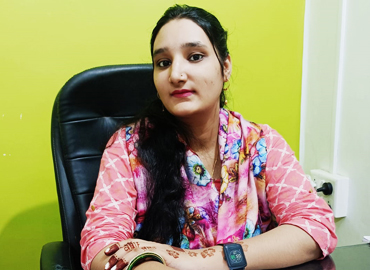Diet plan for diabetes in Patna-Bihar, Eating habits and lifestyle
When you have diabetes, maintaining a healthy diet and regular exercise are essential components of your lifestyle. Apart from the numerous advantages, maintaining an active lifestyle and adhering to a nutritious diet can assist you in maintaining your blood glucose, or blood sugar, within the desired range. You must balance your diet and drink with exercise and, if you take diabetes medication, with other factors to control your blood sugar levels. It's critical to follow your healthcare team's recommended range for blood glucose levels when it comes to what, when, and how much you eat.
Making changes to your diet plan and beverage intake and increasing your physical activity level can be difficult at first. It could be simpler for you to begin with modest adjustments and enlist the support of your loved ones, friends, and medical professionals.
You can benefit from eating healthily and exercising on nearly every day of the week.
· Maintain your blood pressure, cholesterol, and blood glucose levels within the designated ranges.
· Drop pounds or maintain a healthy weight
· Avoid or postpone diabetes-related issues
· Feel content and energized
Which foods are safe to eat in diabetes?
You might fear that if you have diabetes, you will have to give up foods you like. Your favourite foods are still safe to eat, though you may need to cut back on how often or how large you eat them. A diabetes diet plan that suits your preferences and needs will be developed for you by your medical team.
Consuming a range of nutritious meals from every dietary category in the quantities recommended by your meal plan is essential when managing your diabetes.
Food Categories suggested by a diabetes dietitian in Patna-Bihar are:
· Nonstarchy vegetables, such as broccoli, greens, carrots, peppers, and tomatoes, make up the food groups.
· Starchy: made up of green peas, corn and potatoes
· Fruits: bananas, grapes, berries, apples, melon, and oranges
· Grain—whole grains, such as wheat, rice, cornmeal, oats, barley, and quinoa, should make up at least half of your daily intake: tortillas, bread, pasta, and cereal
· Protein sources include fish, nuts, and peanuts; poultry or turkey lacking the skin; and lean meat. Dried beans and specific peas, like split peas and chickpeas; meat alternatives, like tofu.
· Dairy products, such as yogurt, cheese, and non-fat, low-fat, or milk without lactose, if you are lactose intolerant.
Eat foods high in heart-healthy fats, which are mostly found in the following foods:
· Liquid oils that are suitable for room temperature use, like olive and canola oils, nuts, and seeds
· Fish that is good for the heart, like tuna, mackerel, and salmon avocado
When cooking, use oils rather than stick margarine, butter, cream, shortening, or lard.
If I have diabetes, what foods and beverages should I avoid?
Limiting certain foods and beverages
Foods that have been fried and other items high in saturated and trans fats foods rich in salt, also known as sodium sweets, like candies, ice cream, and baked goods drinks that have added sugars, like juice, regular carbonated beverages, and sports or energetic drinks.
Water is a better option than sweetened drinks. Try adding a sugar substitute to your tea or coffee.
If you choose to drink, do so in moderation. For women, limit your intake to one drink per day; for men, limit it to two. Alcohol can cause your blood glucose level to drop too low if you use diabetes or insulin medications that boost your body's production of insulin. If it has been a while since you last ate, this is especially true.
If I have diabetes, when should I eat?
According to a diabetes dietician in Patna- Bihar, some diabetics must eat at roughly the same time every day. Others may be able to adjust the schedule of their meals more easily. The amount and timing of your daily carbohydrate intake may vary according to your diabetes treatment or insulin type. Your eating pattern can be modified if you take insulin at mealtimes.
Your blood sugar level may fall dangerously low if you take certain diabetes medications or insulin and miss or postpone a meal. Find out from your medical team whether you ought to consume food before or after engaging in physical activity.
If I have diabetes, how much food can I eat?
You can control your blood sugar levels and weight by eating the appropriate amount of food. Your medical team can assist you in determining the appropriate daily calorie and food intake.
Weight-reduction strategies
Work with your medical team to develop a weight-loss plan in Bihar if you are obese or overweight.
To help you achieve and keep your target weight, you can customize your calorie and exercise plans with the Body Weight Planner.
You must consume fewer calories and swap out less healthful foods for lower fat, sugar, and calories to lose weight.
It is best to try to shed any extra weight before getting pregnant if you suffer from diabetes, are overweight, or obese, and intend on having a baby. Find out more about diabetes and pregnancy planning.
Techniques for meal plans
If you have diabetes, there are two common strategies to help you plan your meal amounts: the plate approach and carb counting, also known as carb counting. To find the best approach for you, consult your healthcare team.
Plate approach
You can manage your portion sizes by using the plate method. Calorie counting is not necessary. You can see how much of every category of food to eat by using the plate method. For lunch and dinner, this approach works best.
Make use of a 9-inch dish. Arrange the plate so that nonstarchy vegetables take up half of it, meat or another protein takes up one-fourth, and the final quarter is occupied by a grain or starchy food. Starchy vegetables like corn and peas are examples of starches. As part of your meal plan, you can also have just one glass of milk and eat a tiny bowl or piece of fruit.
Small snacks in between meals may also be part of your daily eating plan.
Sizes of portions
· To estimate the amount of space in a portion, you can use common objects or your hand.
· A single serving of poultry or meat is equivalent to a set of cards or your palm.
· A 3-oz portion of fish is equivalent to a chequebook.
· Cheese comes in six dice portions.
· Half a cup of cooked pasta or rice is equivalent to a tennis ball or a small handful.
· A single pancake or waffle serving equals one DVD.
· A ping-pong ball of peanut butter is two tablespoons.
Counting carbs
Counting carbohydrates is monitoring how many grammes of carbohydrates you consume daily through food and drink. Carbohydrates have a greater effect on blood glucose levels than other foods because they are converted by your body into glucose. You can better control your blood sugar by counting your carbs. Counting carbohydrates can assist you in determining the appropriate dosage of insulin if you take it.
While some diabetics who take insulin can benefit from carb counting as a meal-planning tool, not all diabetics require carb counting. You can develop a customised eating plan that best suits your needs with the assistance of your healthcare team.
Foods' carbohydrate content is expressed in grams. To calculate the grammes of carbohydrates in your diet, you must
· Find out which foods contain carbohydrates.
· Examine the Nutrition Facts label or develop the ability to calculate how many grammes of carbohydrates are in the food you eat.
· To find your total for the day and each meal, add the grammes of carbohydrates from every food you eat.
Fruits, milk, starches, and sweets are the main sources of carbohydrates. Try avoiding foods high in refined grains, like white bread and rice, or high in added sugars. Instead, consume whole grains, beans, low-fat or non-fat milk, fruit, and vegetables as sources of carbs.
You might wish to seek medical nutrition therapy from a registered dietitian in addition to counting carbohydrates and utilising the plate method.
If I have diabetes, what kind of exercise should I do?
You can manage your diabetes with the majority of physical activities. Some people may find certain activities dangerous, such as those who have low vision or foot nerve damage. Find out from your medical staff which physical activities are appropriate for you. A common choice for an activity is going for a walk with friends or family.
Boost your daily activity intake
Start out slowly, between five and ten minutes a day, if you haven't been active or if you're trying something new. Next, extend it by a little each week. Less time spent in front of the TV or other screens will increase your daily activity. Try incorporating these easy daily physical activity ideas into your life:
· While you're on the phone or watching TV commercials, move around.
· Perform household tasks like cleaning the house, raking leaves, gardening, and car washing.
· To get to the store, park at the farthest point of the parking lot at the shopping centre.
· Instead of using the lift, use the stairs.






